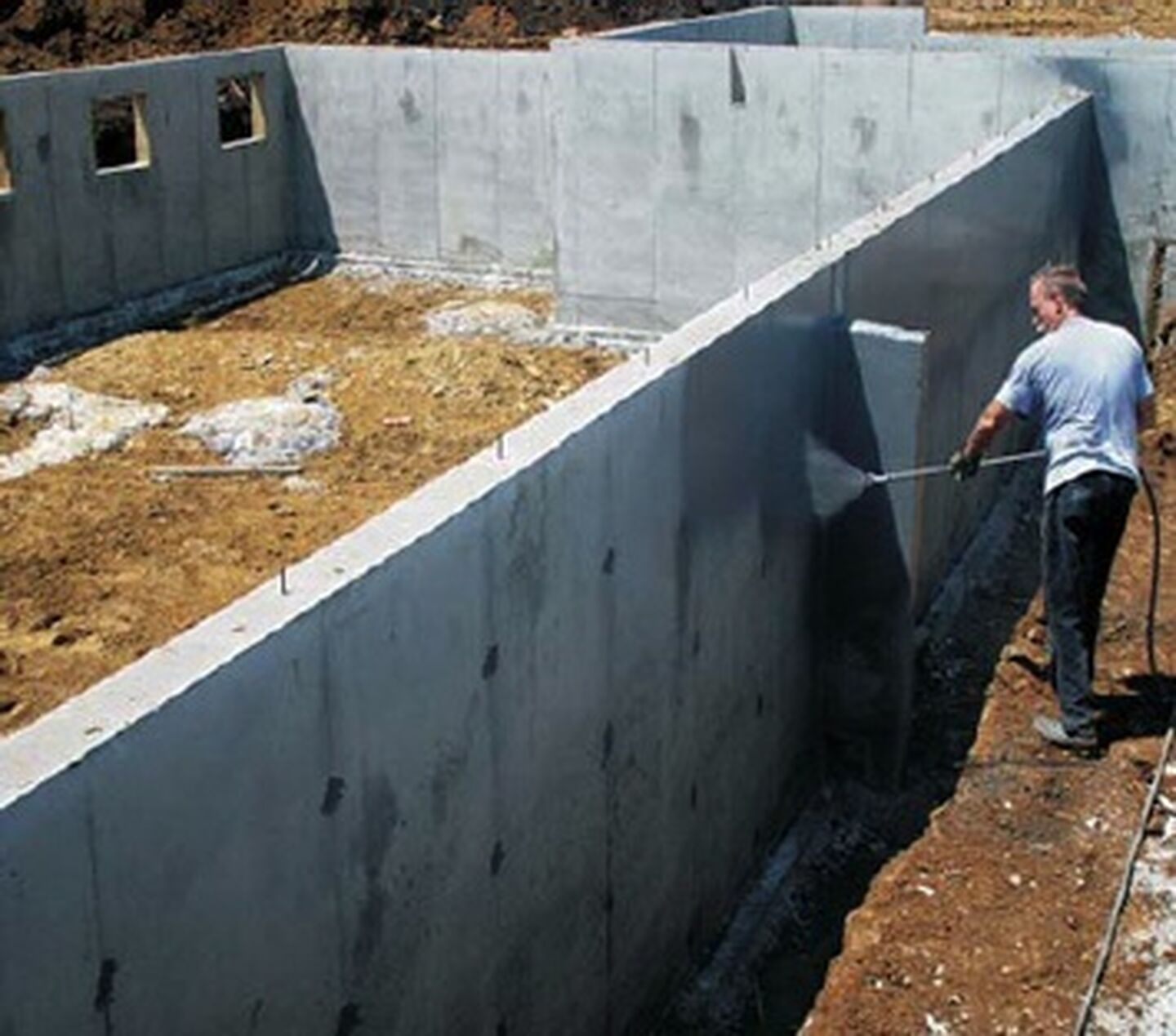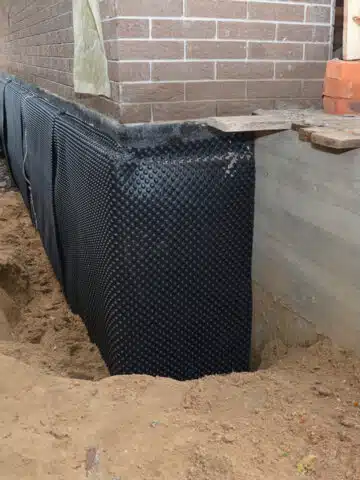Exploring the Numerous Methods and Solutions for Effective Damp Proofing
Wetness in buildings postures significant difficulties to both structural integrity and interior air top quality. Different techniques and options have arised to combat this prevalent issue. From typical damp-proof membrane layers to innovative chemical treatments, each approach supplies special advantages. Recognizing these options is necessary for effective moisture control. Selecting the ideal solution depends on certain building conditions and demands, prompting additional expedition right into the most reliable moist proofing methods offered.
Understanding the Sources Of Wetness
Although wetness can develop from different sources, recognizing these causes is vital for reliable removal. Frequently, moisture originates from 3 main sources: rising moist, permeating wet, and condensation. Increasing damp takes place when groundwater travels upwards via permeable materials, such as brick or rock, commonly because of an absence of a reliable obstacle (mould removal newcastle). Permeating wet is usually created by external aspects, including roofing leaks, defective rain gutters, or damaged wall surfaces, enabling water to infiltrate a residential or commercial property. Condensation, on the other hand, arises from excess wetness in the air, commonly intensified by bad air flow and temperature level distinctions, leading to water beads basing on surface areas. Recognizing these underlying problems is crucial, as each sort of wetness requires a tailored method for remediation. Proper assessment helps in figuring out the most reliable remedies, ultimately safeguarding the structural honesty of a building and boosting interior air quality
Conventional Damp-Proof Membrane Layers

Chemical Damp-Proofing Solutions
Chemical damp-proofing options offer an innovative approach to protecting against wetness breach in buildings. These methods typically include the application of liquid chemicals that pass through stonework and develop an obstacle against rising wet. Commonly made use of chemicals consist of silanes, siloxanes, and other water-repellent representatives that react with surface area products to produce a hydrophobic layer.The application process usually calls for boring holes right into the wall surfaces, injecting the chemical solution, and permitting it to cure. This technique is especially useful for older frameworks where conventional damp-proof membranes might be not practical. Chemical damp-proofing can be much less disruptive and extra affordable than substantial renovation projects.While efficient, these solutions depend on correct application and environmental problems for peak performance. mould removal newcastle. Regular upkeep and monitoring are important to assure the longevity of the damp-proofing therapy. Generally, chemical damp-proofing represents a functional option for securing buildings versus moisture-related damage
Tooth Cavity Wall Building And Construction Techniques
Tooth cavity wall surface building and construction techniques supply countless benefits, specifically in wetness control and power efficiency. By integrating an air void in between 2 layers of masonry, these walls properly mitigate water ingress while enhancing insulation. This combination not just secures frameworks from wetness but additionally adds to decreased energy usage.
Advantages of Cavity Walls
When considering effective damp proofing methods, the advantages of dental caries walls stand apart plainly. Cavity walls consist of 2 different layers, creating an air gap that properly reduces wetness penetration. This design reduces the threat of moisture, as the external wall acts as an obstacle versus rain and water ingress. In addition, cavity walls boost thermal insulation, which adds to power effectiveness by minimizing warm loss. They also provide audio insulation, aiding to produce a quieter interior setting. The air void permits for ventilation, which helps in moisture control and lowers the chance of mold development. These benefits not only enhance the total convenience of a structure however likewise contribute to its longevity and architectural integrity.
Wetness Control Methods
Effective wetness control strategies are critical in tooth cavity wall surface construction to assure long-term security versus dampness. One primary technique entails the consolidation of weep holes, which promote water drainage from the cavity, stopping buildup. Additionally, using breathable membrane layers can assist take care of dampness degrees while allowing trapped vapor to get away. Proper placement of here insulation is additionally crucial, as it ought to not block drainage courses. Moreover, making sure that the external leaves of the tooth cavity wall are built with waterproof products improves general longevity. Regular maintenance checks are important to determine any blockages or damage early, protecting the framework's honesty. Eventually, a combination of these techniques forms a robust protection versus moisture intrusion in cavity walls.
Insulation and Power Performance
Insulation plays a vital function in boosting power efficiency within cavity wall surface building and construction. By including insulating materials, these walls produce a thermal obstacle that reduces heat loss and minimizes energy usage. Reliable insulation not only assists preserve a stable indoor temperature level however also mitigates the danger of dampness, as it stops condensation within the wall tooth cavity. Numerous techniques, such as using stiff foam boards or mineral woollen, can be used to attain optimal insulation efficiency. Furthermore, proper setup is necessary to guarantee that spaces and gaps are decreased, which can otherwise endanger energy performance. Ultimately, a well-insulated dental caries wall surface contributes greatly to total sustainability and lowers heating & cooling costs for house owners.
Outside Damp Proofing Techniques
Exterior moist proofing approaches are important for securing frameworks from dampness infiltration. 2 efficient methods include the application of waterproof membrane layers and the installment of French drains pipes. These solutions assist minimize water buildup and protect the honesty of buildings.
Waterproof Membrane Application
While various techniques exist for preventing moisture ingress, the application of water-proof membrane layers remains an extremely efficient exterior wet proofing technique. These membranes are typically made from materials such as polyethylene, rubber, or customized bitumen, providing a robust barrier versus water infiltration. The installation process includes using the membrane to the exterior surfaces of foundations or wall surfaces, ensuring total insurance coverage to prevent leaks. Proper adhesion and sealing at joints are crucial to taking full advantage of effectiveness. Waterproof membrane layers can be used in numerous kinds, consisting of fluid finishes and sheet membrane layers, permitting adaptability based upon the certain requirements of the framework. This technique not only safeguards buildings from wetness however additionally boosts their longevity and structural honesty.
French Drain Installation
One effective technique for taking care of groundwater and preventing wetness accumulation around a building's structure is the setup of a French drain. This drain system consists of a trench filled up with gravel and a perforated pipe that reroutes surface water away from the foundation. Appropriate installment requires cautious preparation, ensuring that the drain slopes far from the framework to facilitate perfect water flow. Furthermore, the place of the drain is vital; it needs to be placed in areas vulnerable to pooling or excess dampness. Regular maintenance, consisting of cleaning particles from the gravel and guaranteeing the pipeline remains unhampered, is crucial for long-term efficiency. Eventually, a well-installed French drain can considerably reduce the danger of water-related issues in cellars and structures.
Inside Waterproofing Approaches
Inside waterproofing approaches are essential for shielding a structure's interior from moisture seepage and prospective water damages. These techniques usually involve the application of specific products and methods designed to produce a dampness barrier within the framework. One common technique is making use of water resistant coverings or sealers on wall surfaces and floorings, which prevent wetness from passing through surfaces.Additionally, setting up indoor drainage systems, such as sump pumps, can properly manage water buildup in basements and creep rooms. Another approach involves the usage of vapor obstacles, which are installed to inhibit wetness motion from the ground right into living spaces.Moreover, dealing with any type of splits or spaces in wall surfaces or structures with appropriate sealants assures a complete defense against water invasion. By carrying out these indoor waterproofing strategies, residential or commercial property owners can substantially lower the threat of mold and mildew development, structural damage, and other moisture-related issues. Proper implementation of these methods is vital for lasting security and building honesty.
Regular Upkeep and Inspection Practices
Routine maintenance and examination practices are vital for ensuring the long-lasting efficiency of wet proofing options in any type of building. Regular checks allow homeowner to identify early signs of dampness breach, such as peeling paint, mold development, and stuffy odors. These indicators can signify underlying problems that require instant attention.Inspections ought to be conducted a minimum of every year, focusing on susceptible areas like cellars, crawl spaces, and outside walls. During these assessments, homeowner must analyze sealants, drain systems, and ventilation to confirm they function correctly.Additionally, preserving downspouts and rain gutters is necessary, as blocked systems can result in water build-up near the structure. Executing a normal maintenance timetable, along with prompt repairs, can significantly expand the life expectancy of wet proofing steps and protect the structural honesty of the building. Positive procedures ultimately contribute to the general health and wellness of the living environment.
Often Asked Inquiries
For How Long Does Damp Proofing Generally Last?
The duration of wet proofing efficiency varies, commonly lasting between 20 to 50 years. Factors such as application quality, ecological problems, and maintenance practices considerably affect the longevity of the damp proofing treatment.

Can I Damp Proof My Home Myself?
The private considered the expediency of DIY damp proofing. With correct study and the appropriate products, it is possible. They likewise identified the importance of specialist guidance to ensure long-lasting performance and prevent future issues.
What Are the Indicators of Inadequate Damp Proofing?
Indications of inadequate wet proofing include consistent musty smells, visible mold development, peeling paint, wet spots on wall surfaces, and wood decay - damp proofing newcastle. Property owners must resolve these problems promptly to avoid additional damages and health issues
Does Damp Proofing Affect Indoor Air High Quality?

Just How Much Does Professional Damp Proofing Cost?
Professional damp proofing prices differ significantly, commonly varying from $1,000 to $5,000 depending on the home's dimension, the extent of the damp problem, and selected approaches. Each scenario requires a customized assessment for accurate pricing. Typically, moisture stems from 3 key resources: climbing wet, penetrating damp, and condensation. When considering efficient damp proofing approaches, the advantages of cavity walls stand out prominently. External damp proofing methods are vital for securing frameworks from dampness seepage. While various approaches exist for avoiding wetness access, the application of waterproof membrane layers stays an extremely effective outside damp proofing strategy. Indicators of inadequate moist proofing include persistent musty odors, noticeable mold and mildew development, peeling paint, wet spots on walls, and timber degeneration.